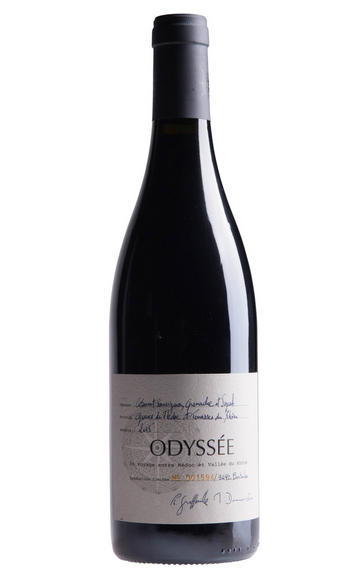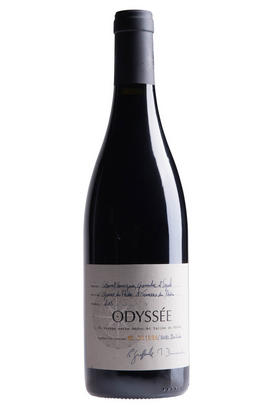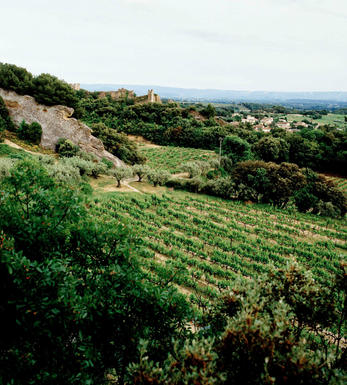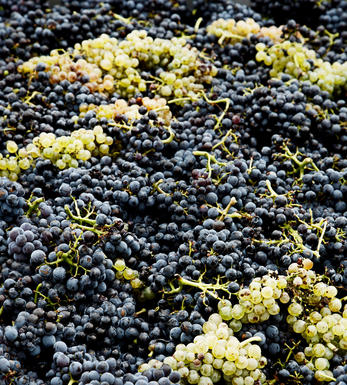
2016 Pierre Graffeuille, Odyssée, Vin de France

Critics reviews
Drink 2020 - 2032
Jane Anson, Decanter.com (May 2020)
Drink 2021 - 2041
Lisa Perrotti-Brown, Wine Advocate ( Jul 2021)
Jeb Dunnuck, jebdunnuck.com (Dec 2020)
About this WINE

Pierre Graffeuille

France
Despite their own complacency, occasional arrogance and impressive challenges from all-comers, France is still far and away the finest wine-producing nation in the world and its famous regions – Bordeaux, Burgundy, Champagne, Loire, Rhône, Alsace and increasingly Languedoc Roussillon – read like a who’s who of all you could want from a wine. Full-bodied, light-bodied, still or fizzy, dry or sweet, simple or intellectual, weird and wonderful, for drinking now or for laying down, France’s infinitesimal variety of wines is one of its great attributes. And that’s without even mentioning Cognac and Armagnac.
France’s grape varieties are grown, and its wines emulated, throughout the world. It also brandishes with relish its trump card, the untranslatable terroir that shapes a wine’s character beyond the range of human knowledge and intervention. It is this terroir - a combination of soil and microclimate - that makes Vosne-Romanée taste different to Nuits-St Georges, Ch. Langoa Barton different to Ch. Léoville Barton.
France is a nation with over 2,000 years of winemaking, where the finest grapes and parcels of land have been selected through centuries of trial and error rather than market research. Its subtleties are never-ending and endlessly fascinating. Vintage variation is as great here as anywhere – rain, hail, frost and, occasionally, burning heat can ruin a vintage. Yet all this creates interest, giving the wines personality, and generating great excitement when everything does come together.
However, this is not to say that French wine is perfect. Its overall quality remains inconsistent and its intricate system of classification and Appellation d’Origine Contrôlée (AOC) based on geography as opposed to quality is clearly flawed, sometimes serving as a hindrance to experimentation and improvement.
Nevertheless, the future is bright for France: quality is better than ever before – driven by a young, well-travelled and ambitious generation of winemakers – while each year reveals new and exciting wines from this grand old dame.

Syrah & Merlot
The Syrah & Merlot wine blend combines the unique characteristics of both grapes to create a harmonious and balanced wine.
Syrah is a bold and robust grape variety known for its deep colour, rich flavours, and strong tannins. It typically offers intense aromas of dark fruits such as blackberry, blueberry, and plum, along with notes of pepper, spices, and sometimes a touch of smokiness. The wines are often full-bodied, with a firm structure and a long, persistent finish.
Merlot, on the other hand, is generally considered a softer and more approachable grape variety. It produces wines that are medium to full-bodied with velvety textures. Merlot is known for its juicy flavours of ripe red fruits like cherry and raspberry and hints of chocolate, herbs, and sometimes floral notes. It tends to have milder tannins compared to Syrah.
When blended, Syrah and Merlot can complement each other's strengths and create a more complex and well-rounded wine. The softness, fruitiness, and elegance of Merlot can balance Syrah's structure, intensity, and spiciness. The result is often a wine with a deep, concentrated colour, a rich bouquet of fruits and spices, a medium to full body, and a smooth, velvety texture.
The proportions of Syrah and Merlot in the blend can vary depending on the winemaker's preference and the desired style of the wine. In some cases, Syrah may dominate the blend, adding power and intensity, while Merlot contributes smoothness and approachability. In other blends, the proportions may be more equal, aiming for both varieties' balanced and harmonious expression.


Buying options
Add to wishlist
Description
I tasted the 2015 and 2016 of this wine, and this one for me is the best of the two. A powerful mix of Cabernet, Grenache and Syrah that suggests Gigondas power with a more structured tannic backbone. It comes from a mix of two terroirs - Médoc gravels and Rhône granite and loam - which translates on the palate to the Cabernet giving clear tannic structure and dark cassis fruits that melt into the richer blackberry and raspberry fruits of the southern Rhône varieties. Concentrated yet welcoming, highly enjoyable, with tight spices. Blend is completed with 9% Mourvèdre, 8% Merlot, 2% Petit Verdot.
Drink 2020 - 2032
Jane Anson, Decanter.com (May 2020)
wine at a glance
Delivery and quality guarantee